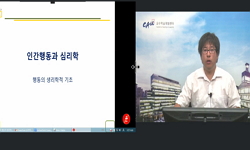Government has implemented R&D expenditure tax benefit system to encourage R&D activity to domestic firm and attract investment from multinational companies in Tax Reduction and Exemption Control Act. The firm, however, may have an opportunistic behav...
http://chineseinput.net/에서 pinyin(병음)방식으로 중국어를 변환할 수 있습니다.
변환된 중국어를 복사하여 사용하시면 됩니다.
- 中文 을 입력하시려면 zhongwen을 입력하시고 space를누르시면됩니다.
- 北京 을 입력하시려면 beijing을 입력하시고 space를 누르시면 됩니다.

재량적 연구개발비와 조세회피 - 연구개발비 세제 혜택을 중심으로 - = Discretionary R&D Expenditure and Tax Avoidance - Focus on R&D Tax Relief -
한글로보기https://www.riss.kr/link?id=A106511765
- 저자
- 발행기관
- 학술지명
- 권호사항
-
발행연도
2019
-
작성언어
Korean
- 주제어
-
등재정보
KCI등재
-
자료형태
학술저널
-
수록면
101-130(30쪽)
-
KCI 피인용횟수
2
- DOI식별코드
- 제공처
- 소장기관
-
0
상세조회 -
0
다운로드
부가정보
다국어 초록 (Multilingual Abstract)
Government has implemented R&D expenditure tax benefit system to encourage R&D activity to domestic firm and attract investment from multinational companies in Tax Reduction and Exemption Control Act. The firm, however, may have an opportunistic behavior in which they spend R&D expenditure discretionarily in excess of appropriate levels in order to get tax benefits. In addition, considering the limit of tax benefit related to R&D expenditure, the relation between the discretionary R&D expenditure and tax avoidance of the firms can be diminished at the certain level.
we employ an empirical research to examine the relation between discretionary R&D expenditure and tax avoidance for 8,786 non-financial companies listed in KOSPI and KOSDAQ from 2006 to 2017. To examine, we estimate discretionary R&D expenditure of firms by using estimate appropriate R&D expenditure model presented by Qian et al.(2012)
The followings are emprical results. First, we obtain positive relationship between discretionary R&D expenditure and tax avoidance. It suggests that the firms spend excessive R&D cost to get tax benefit from R&D expenditure. Second, the square term of discretionary R&D expenditure in OLS model has significant negative sign to the proxies of tax avoidance, which means the relationship between discretionary R&D expenditure and tax avoidance is inverted U shape, diminishing at some level. This is empirical evidence that the firm intend to avoid tax using discretionary R&D expenditure within the limit of tax benefits.
By examining firm's R&D expenditure and tax avoidance, this study suggests that the R&D tax benefit system established by the government to encourage R&D cause inefficient R&D expenditures unlike policy purposes,
국문 초록 (Abstract)
정부는 기업의 R&D활동을 장려하고 다국적 기업의 투자를 유치하기 위하여, 조세특례제한법 등을 통해 연구개발비에 대한 조세혜택을 부여하여 법인세를 감면하는 정책을 시행하고 있다. 이...
정부는 기업의 R&D활동을 장려하고 다국적 기업의 투자를 유치하기 위하여, 조세특례제한법 등을 통해 연구개발비에 대한 조세혜택을 부여하여 법인세를 감면하는 정책을 시행하고 있다. 이러한 정책적 목적과 달리 기업은 조세혜택을 기회주의적으로 활용하여 적정 수준을 초과하여 연구개발비를 초과 지출함으로써 비효율적인 연구개발비를 통해 조세를 회피할 것이며, 또한 연구개발비 관련 조세혜택에는 한도가 있음을 고려했을 때, 과도하게 지출한 연구개발비와 조세회피와의 관련성은 일정 수준을 기점으로 체감할 가능성이 있다.
이에 본 연구는 2006년부터 2017년까지 KOSPI, KOSDAQ에 상장 비금융기업 8,786개를 대상으로 기업의 재량적 연구개발비와 조세회피간의 관계를 검증하였다. 분석을 위해 Qian et al (2012)에서 제시한 모형을 통해 기업별 적정 연구개발비 수준을 추정하였고 실제 지출된 연구개발비에서 추정된 적정 연구개발비를 차감하여 재량적 연구개발비를 도출하였다.
분석 결과, 첫째로 재량적 연구개발비는 조세회피 성향과 양(+)의 관계가 나타났다. 이는 기업들이 조세 혜택을 받기 위해 적정 수준 이상의 연구개발비를 지출하고 있음을 의미한다. 둘째, 재량적 연구개발비의 제곱항은 조세회피 성향과 음(-)의 관계가 나타났다. 즉, 기업의 과도한 연구개발비와 조세회피 성향과의 관련성은 일정 수준을 기점으로 체감하는 관계(Inverted-U-shape)가 존재함을 의미한다. 이는 기업이 연구개발비를 지속적으로 투자를 하기 보다 조세혜택의 한도 내에서 재량적 연구개발비를 이용하여 조세회피를 하고 있음을 나타내는 실증적인 증거이다. 본 연구는 기업의 연구개발비 지출 행태와 조세회피 성향을 검증함으로써, 정부가 R&D를 장려하기 위해 설립한 조세지원 제도가 정책적 목적과 달리 기업의 비효율적인 연구개발비 지출을 유도하고 있음을 시사한다.
참고문헌 (Reference)
1 Lev, B., "The capitalization, amortization, and value-relevance of R&D" 21 (21): 107-138, 1996
2 Brown, K. M., "The R&D Tax Credit: An Evaluation of Evidence on Its Effectiveness: a Staff Study" US Government Printing Office 99 (99): 1985
3 Qian, H., "Seasoned Equity Issuers’ R&D Investment: Signaling or Overoptimism" 35 (35): 553-580, 2012
4 OECD, "R&D Tax Incentives: Evidence on design, incidence and impacts" OECD Science 2016
5 Dechow, P. M., "Detecting earnings management" 70 (70): 193-225, 1995
6 Desai, M. A., "Corporate tax avoidance and high-powered incentives" 79 (79): 145-179, 2006
1 Lev, B., "The capitalization, amortization, and value-relevance of R&D" 21 (21): 107-138, 1996
2 Brown, K. M., "The R&D Tax Credit: An Evaluation of Evidence on Its Effectiveness: a Staff Study" US Government Printing Office 99 (99): 1985
3 Qian, H., "Seasoned Equity Issuers’ R&D Investment: Signaling or Overoptimism" 35 (35): 553-580, 2012
4 OECD, "R&D Tax Incentives: Evidence on design, incidence and impacts" OECD Science 2016
5 Dechow, P. M., "Detecting earnings management" 70 (70): 193-225, 1995
6 Desai, M. A., "Corporate tax avoidance and high-powered incentives" 79 (79): 145-179, 2006
동일학술지(권/호) 다른 논문
-
연금소득 과세제도의 개편방안에 관한 연구 -2014년 세액공제로의 제도전환에 관한 비판을 중심으로-
- 한국조세연구포럼
- 권형기
- 2019
- KCI등재
-
- 한국조세연구포럼
- 유호림
- 2019
- KCI등재
-
- 한국조세연구포럼
- 김수란
- 2019
- KCI등재
-
- 한국조세연구포럼
- 윤성만
- 2019
- KCI등재
분석정보
인용정보 인용지수 설명보기
학술지 이력
| 연월일 | 이력구분 | 이력상세 | 등재구분 |
|---|---|---|---|
| 2022 | 평가예정 | 재인증평가 신청대상 (재인증) | |
| 2019-01-01 | 평가 | 등재학술지 유지 (계속평가) |  |
| 2016-01-01 | 평가 | 등재학술지 선정 (계속평가) |  |
| 2015-01-01 | 평가 | 등재후보학술지 유지 (계속평가) |  |
| 2013-01-01 | 평가 | 등재후보 1차 PASS (등재후보1차) |  |
| 2012-01-01 | 평가 | 등재후보 1차 FAIL (기타) |  |
| 2011-01-01 | 평가 | 등재후보 1차 PASS (등재후보1차) |  |
| 2009-01-01 | 평가 | 등재후보학술지 선정 (신규평가) |  |
학술지 인용정보
| 기준연도 | WOS-KCI 통합IF(2년) | KCIF(2년) | KCIF(3년) |
|---|---|---|---|
| 2016 | 0.49 | 0.49 | 0.62 |
| KCIF(4년) | KCIF(5년) | 중심성지수(3년) | 즉시성지수 |
| 0.58 | 0.53 | 0.854 | 0.29 |





 KCI
KCI DBpia
DBpia





